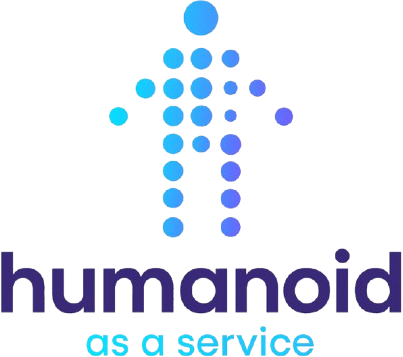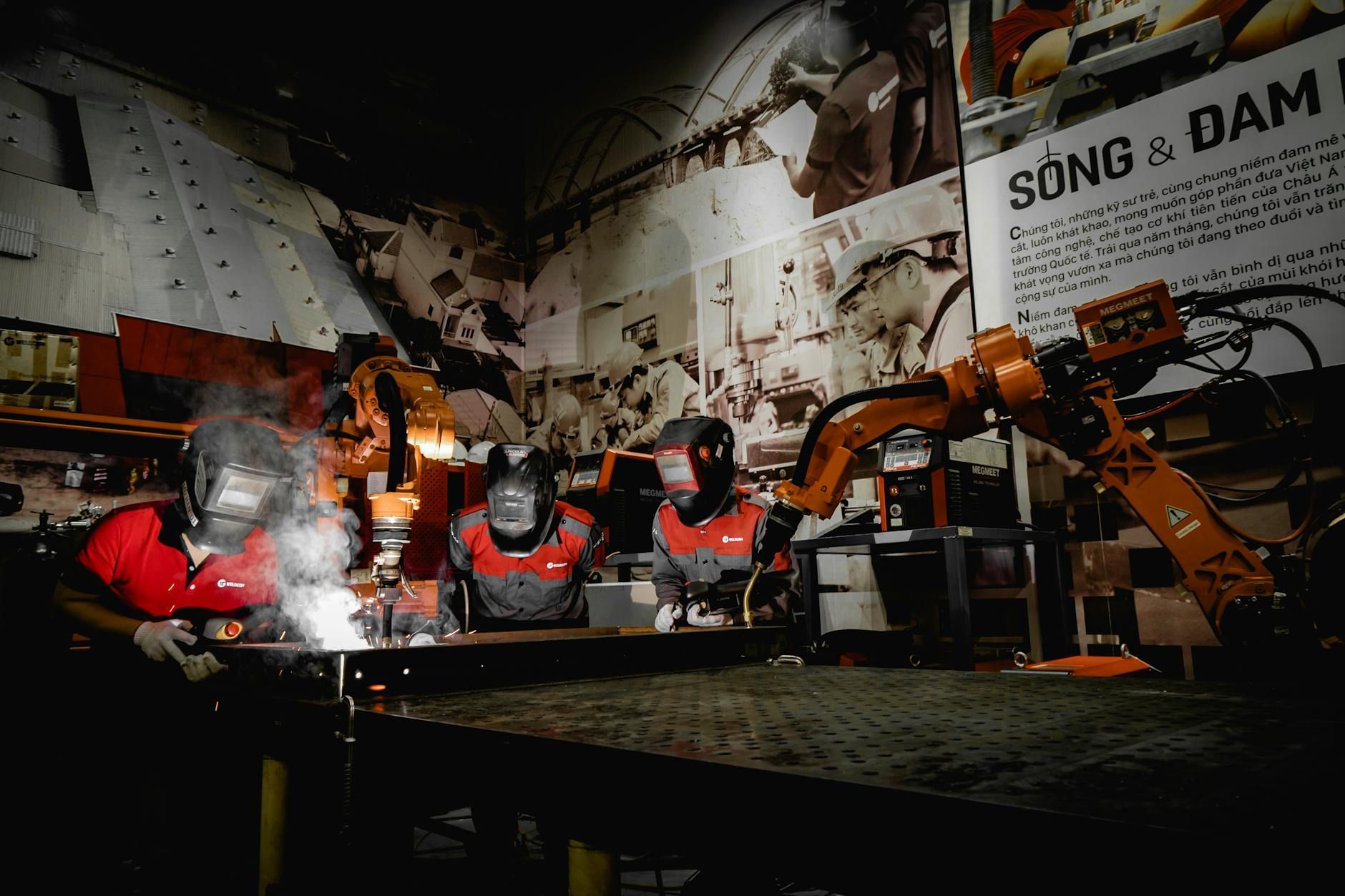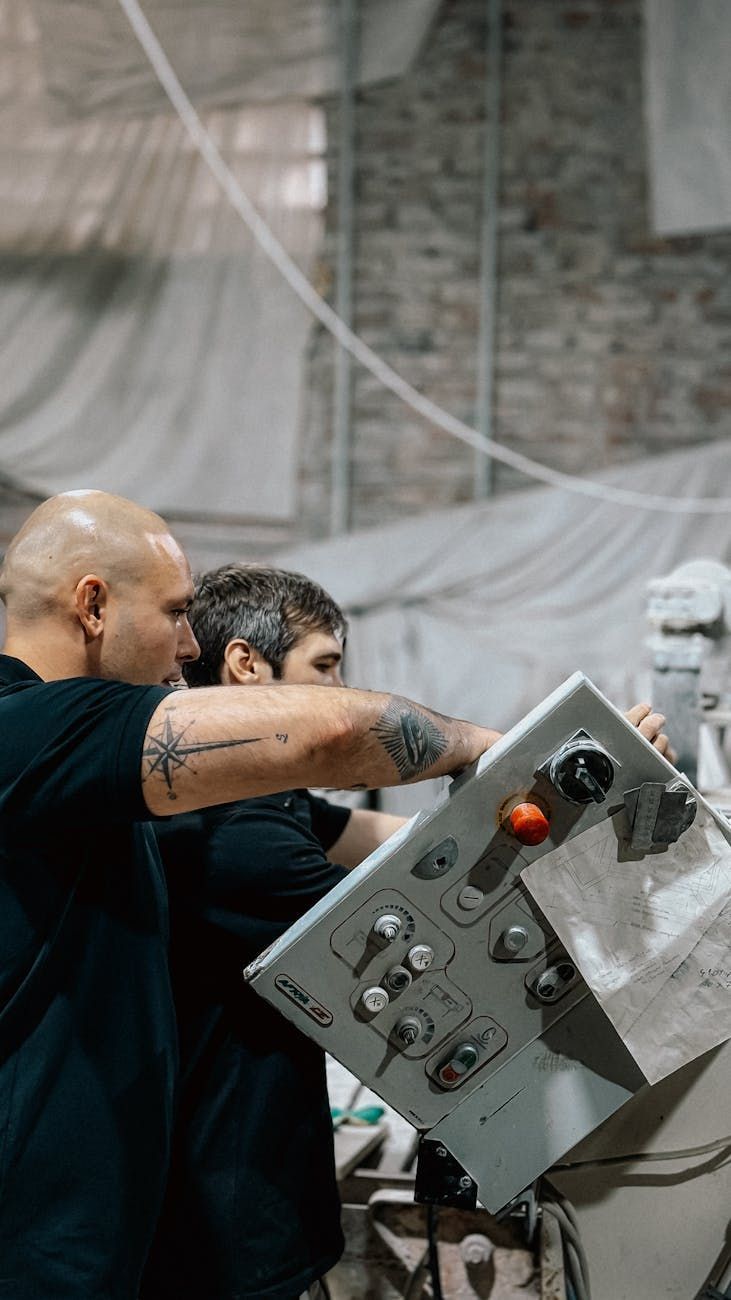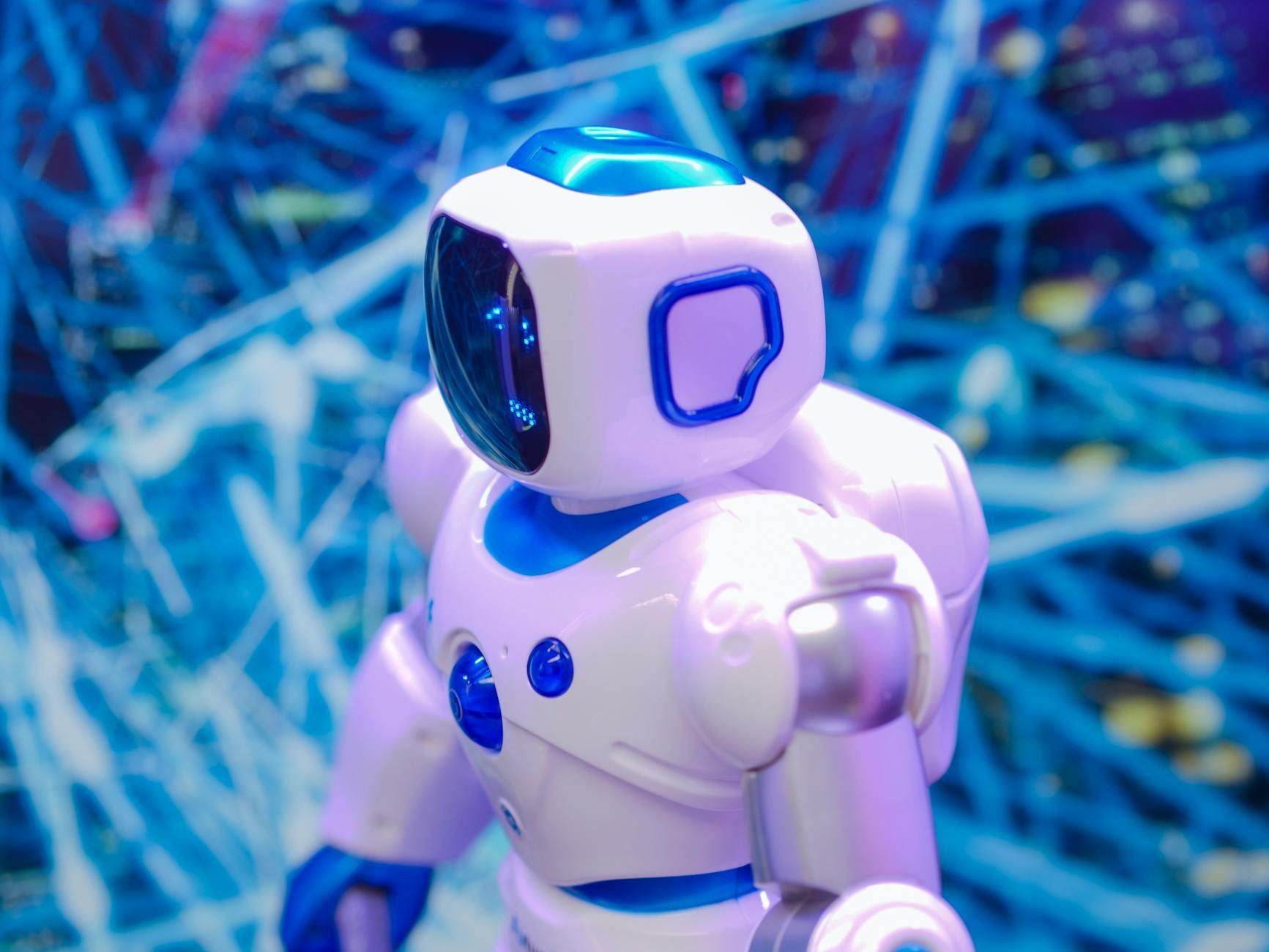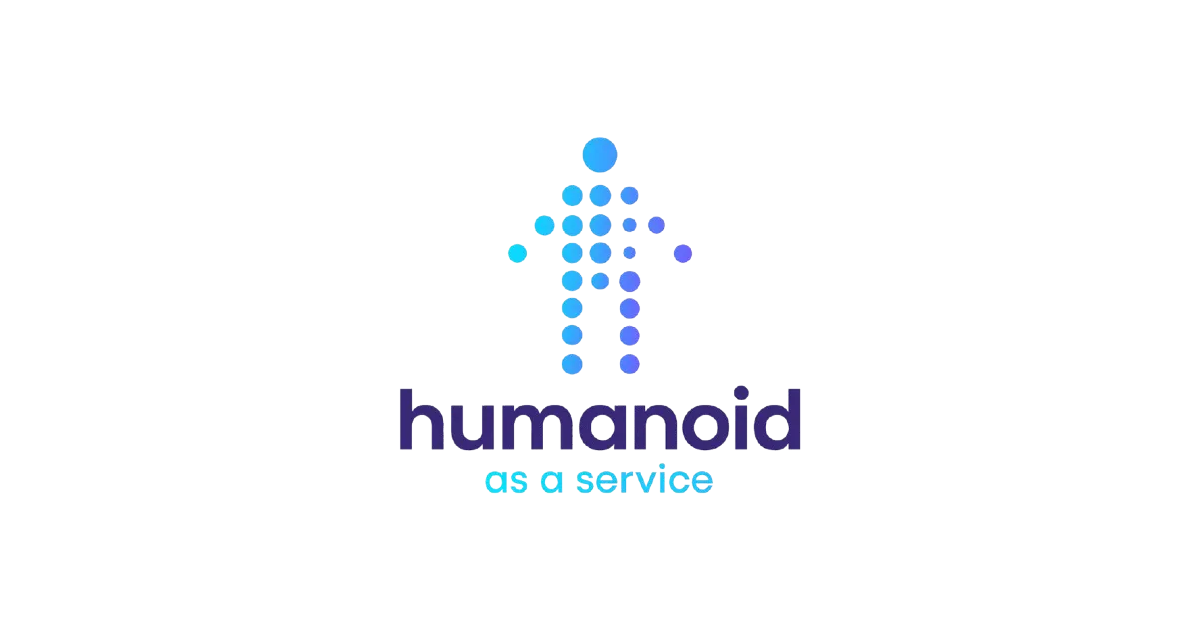Strong Wealth Solutions
The Surprising Impact of AI on Workforce Dynamics
Artificial intelligence (AI) is changing your business realities faster than most of us imagined. Chances are, you’ve already spotted the surprising impact of AI on workforce priorities. From schedule optimization to product design, even seemingly small adjustments you make today can reshape how your teams collaborate and produce results tomorrow. Whether you’re curious about boosting efficiency like never before or worried about potential disruptions to traditional roles, it’s important to understand how AI and humanoid robotics can help you drive smarter decisions.
Below, you’ll find an in-depth look at why these technologies matter for forward-thinking executives and business leaders, and how you can stay ahead in a marketplace undergoing radical shift.
Understand emerging AI trends
Understanding emerging AI trends is key to making proactive decisions at the leadership level. AI is no longer just about automating a few tasks in your company’s back office. It now involves advanced technologies that navigate complex patterns, adapt to real-time data, and inform new strategies.
The learning AI revolution
AI systems have evolved beyond simple if-then scripts. Machine learning algorithms (a set of statistical techniques that allow computers to learn patterns) have advanced to deep learning, a discipline modeled on the structure of the human brain. These networks process enormous data sets, recognizing images, understanding language, and even anticipating consumer behavior.
When a computer learns in real time, it accelerates your decision-making power. Let’s say you produce consumer goods. Your AI tool can track thousands, even millions, of data points (prices, inventory, social media feedback), then highlight emerging customer tastes. This kind of analysis used to take human teams days or weeks. Now, it might be seconds. You no longer wait for the monthly report to adjust your business strategy. Instead, you adapt immediately to fast-moving trends.
New frontiers beyond robotics
When people talk about AI in the workforce, they often jump to industrial robots or simplified robotic process automation. While mechanical robots and software-based bots still form a big part of the picture, AI is also enabling newly emerging “smart machines” that simulate human interaction. Tools like virtual assistants and digital analytics systems can handle a wide range of tasks—forecasting sales, scheduling meetings, sifting through resumes—freeing your workforce to concentrate on creative and strategic work instead.
Explore the changing job landscape
If you think future offices might become exclusively machine-driven, you can rest assured that people will still be in the loop. However, roles and responsibilities will evolve. AI can take on repeatable activities, but humans excel at adaptability, emotional intelligence, and strategic thinking. By harnessing AI to boost your employees’ strengths, you create a workplace environment where both technology and people continually learn from each other.
Redefining roles, not removing them
Automation often sparks talk of job cuts. Yet experts frequently suggest that AI-based tools reconfigure existing positions more than they eliminate them outright. A project manager, for example, might rely on AI-generated data analysis to refine the production schedule. In turn, that person can focus on higher-level decision-making, client relationships, and risk management tasks. Rather than needing a data-entry specialist, you might train that team member to interpret AI analytics and provide strategic insights.
By highlighting how AI complements rather than supplants core human abilities, you remind employees that they have agency and indispensable value. If your team members see how technology lightens routine tasks, you’ll inspire them to embrace new skills and collaboration approaches.
Shifting the education and training mindset
Education and training programs across industries increasingly reference AI-driven workflows. Whether you’re in banking, healthcare, or retail, there’s a growing expectation that employees at all levels become fluent in basic automation and data interpretation. Soon, it may be common to have AI-facilitated boot camps for entry-level hires. Likewise, leadership development sessions could focus more on interpreting AI outputs and designing strategic initiatives around them.
While retraining might seem time-consuming, it’s a stepping stone to a more competitive and tech-savvy workforce. With AI performing grunt work, your employees can develop interpersonal and managerial skills. They become less bogged down by mind-numbing tasks and more engaged in creative problem-solving that matters to your bottom line.
Assess growth of AI adoption
AI adoption is expanding beyond tech giants. Startups, mid-sized firms, and traditional enterprises are looking to incorporate intelligence into everything from manufacturing to marketing. Understanding the pace of AI adoption can help you see where your own company stands and where you might want to accelerate efforts.
Industries leading the AI charge
Some sectors have embraced AI more quickly. Finance and insurance, for example, leverage sophisticated algorithms for credit scoring, detecting fraud, and analyzing market trends. Healthcare organizations use machine learning to interpret imaging scans, assisting doctors with timely diagnoses. Logistics and customer service rely heavily on AI chatbots to manage high volumes of inquiries.
However, if your organization spans manufacturing, construction, education, or other areas not traditionally labeled “high-tech,” this doesn’t mean you’re immune to AI’s growing influence. On the contrary, you can now find plug-and-play AI solutions that integrate with existing workflows. Imagine using an AI scheduling platform that automatically adjusts production line tasks based on real-time supply data. These kinds of innovations are no longer exclusive to the biggest players.
Barriers to mass integration
Several roadblocks can slow AI adoption, including cost, data security concerns, and a lack of in-house expertise. Yet, each of these can be managed through thoughtful planning:
- Cost concerns: Many solutions now come in subscription-based or pay-as-you-go models, eliminating the need for heavy up-front investment in hardware.
- Data security: Reputable AI vendors prioritize encryption and compliance with data privacy laws, helping you reduce risk.
- Lack of expertise: You can partner with specialized agencies or hire new talent dedicated to AI-driven initiatives.
This is where solutions such as Humanoid as a Service (HaaS) can help. By considering flexible service models, you can evaluate your unique barriers and opportunities without an enormous capital commitment.
Prepare for new skill demands
As AI becomes more integrated into companies across the board, new skill demands follow. Your employees (and you, too) will likely need to pivot into a habit of constant learning. This keeps your team competitive and better prepared for fresh challenges.
Essential AI-ready capabilities
- Data literacy: Even non-technical staff increasingly need to interpret performance dashboards, patterns, or data visualizations.
- Digital collaboration: Team members often collaborate with AI tools in real time. Giving feedback, verifying data, or refining analysis are now part of everyday workflows.
- Critical thinking: Questioning the output of algorithms ensures that you don’t rely on flawed data or bias-laden models. Your team’s ability to spot anomalies and escalate them quickly is crucial.
By focusing on these areas, you encourage nimble adaptation. Ultimately, your company can do more with less, delivering high-value innovation in a shorter timeframe.
Strategies for upskilling
- Internal workshops: Providing hands-on training, led by experienced AI practitioners, can help new skills sink in.
- Micro-certifications: Short, concentrated courses from recognized providers keep employees engaged without requiring lengthy time away.
- Mentoring programs: Pair employees with budding AI experience alongside more seasoned subject-matter experts, fostering knowledge sharing.
When you invest in people, you help them flourish in an AI-directed environment—rather than leaving them feeling overshadowed by new tech.
Embrace humanoid robotics benefits
Humanoid robotics represents a major leap in workforce automation. These machines aim to mimic human gestures, movement, and even social behaviors. While this technology is still evolving, you can already see prototypes that interact with customers in retail settings or assist medical staff in hospitals. For forward-thinking executives, humanoid robots could take on repetitive or hazardous tasks, allowing human employees to focus on higher-level responsibilities.
Human-mimicking machines in the workplace
Imagine a humanoid robot that greets visitors, answers frequently asked questions, and even gives them a guided tour of your facility. Now, scale that idea to a production environment, where a humanoid system helps carry heavy loads or monitor supply chain tasks that are hazardous for people. These examples aren’t science fiction. They’re part of the ongoing research and development in AI. Of course, quality control and strategic oversight still rest with you and your human employees. But a humanoid robot can augment daily operations in ways a static non-anthropomorphic machine simply can’t match.
Though it may take time and resources to integrate these solutions, implementing a gradual rollout strategy can minimize disruptions. By trialing humanoid solutions in smaller or controlled environments first, you gather data to refine usage, address technical hiccups, and measure real-world returns on investment.
Unlocking synergy with HaaS
Humanoid as a Service, or HaaS, is an emerging model that simplifies how you acquire and deploy humanoid robots. Rather than handling everything from robotics engineering to advanced AI design internally, you can partner with a service provider that offers these machines on demand. For many companies, this makes advanced humanoid robotics more accessible and budget-friendly. You don’t have to be a tech giant to offload tasks such as assembly, routine inspections, or data analytics to a humanoid system. Instead, you tap an established vendor who provides ready-to-deploy products alongside ongoing support.
Alleviate repetitive tasks with automation
A significant impact of AI on workforce roles is the alleviation of tedious tasks. When AI handles routine or labor-intensive jobs, your team can pivot to higher-value work that requires judgment and creativity. This helps them feel more satisfied and engaged.
Automatable tasks to consider
- Data entry and data sorting: AI-driven software scans documents, extracts key information, and updates databases.
- Customer support triage: Chatbots can answer common questions, leaving complex inquiries for human representatives.
- Invoice processing: Automated systems verify invoice data, flag discrepancies, and forward them for human approval if needed.
- Basic research: AI quickly combs through large datasets and compiles summarized reports for your team to review.
When you automate these tasks, you cut down on human error and accelerate throughput. The end result is a smoother workflow for both employees and clients.
Easing into automation
If you’re not sure where to begin, start small. Maybe you experiment with a pilot project in a single department. As you measure productivity gains and assess user feedback, you can refine processes before scaling up. You may be surprised by how quickly ROI becomes apparent, especially once employees grow more comfortable with handing off mundane work to AI-based tools.
Foster better employee satisfaction
Automation can foster better satisfaction among your workforce if implemented correctly. Rather than feeling threatened, employees often welcome the opportunity to do more innovative tasks. The key is aligning AI-driven automation with employees’ individual strengths and career aspirations.
Encouraging a collaborative mindset
Help your employees understand that AI is there to act as their ally, not their rival. For instance, you might hold open forums where staff can voice concerns, share automation ideas, and suggest process improvements. This collaborative approach not only uncovers new use cases but also makes employees feel included. Rather than a top-down mandate, AI adoption becomes a shared project that everyone helps shape.
Recognizing new achievements
Beyond collaboration, it’s important to redefine performance metrics when AI takes over some responsibilities. Celebrate achievements that come from employees’ enhanced roles. Maybe your sales team now has more time to nurture relationships with key accounts because chatbots handle basic customer interactions. Commend them for forging deeper trust with those clients, and highlight how AI supported them in that process.
When staff see their efforts leading to stronger results, you’ll notice a morale boost. Their sense of job ownership increases, because they are building on the potential of technology rather than fearing it.
Address ethical and social considerations
The impact of AI on workforce culture extends beyond efficiency and productivity. Ethical and social implications come into play, especially when it comes to data privacy, bias, and displacement concerns. It’s crucial that you devise transparent policies and guidelines for implementing AI within your organization.
Navigating data privacy
If you collect data to train AI systems, make sure you’re respecting the privacy of employees, clients, and customers. Works councils or labor unions may have additional rules, depending on where you operate. Clearly communicate to your workforce which data points you’re monitoring, how they’re stored, and why they’re needed. An open dialogue fosters trust and can help you avoid damaging misunderstandings.
Tackling algorithmic bias
Without proper oversight, AI might unintentionally discriminate. For instance, an AI tool trained on biased historical data might unfairly screen out qualified job candidates from certain backgrounds. Or it could undervalue employees’ contributions if it only measures easily quantifiable metrics. To address these risks, you’ll want to develop a robust review process that periodically tests your AI for bias. When you find a red flag, halt the relevant processes, retrain the models if necessary, and keep a human in the loop for checking final decisions.
Balance human and AI collaboration
Balancing human expertise and AI speed is an art. Lean too heavily on AI, and you risk losing the creativity and empathy your workforce provides. Rely too much on human intuition, and you might miss out on data-driven insights that could streamline your operations.
The crucial human touch
In high-stakes or relationship-based industries, personal interaction remains essential. Clients, partners, and employees want to feel heard and understood by another person. Even with advanced machine learning, your AI tools may struggle to interpret complex emotional cues or handle nuanced negotiations. Consider a hybrid approach: let an AI assistant gather and analyze facts, then have a human deliver the final pitch or recommendation. This approach respects both efficiency and empathy.
Continuous collaboration updates
As technology evolves, your collaborative strategies should as well. Periodically audit your processes. Ask questions like “Are we letting AI do too much?” or “Which areas could benefit from deeper AI integration?” Adjust accordingly, and remain open to new best practices. By staying proactive, you’ll keep your organization nimble amid a rapidly shifting competitive landscape.
Measure real ROI from AI initiatives
Before embarking on full-scale rollout, it’s wise to measure the return on investment (ROI) of your AI initiatives. Don’t let hype overshadow the reality. Identify clear KPIs, track your progress, and compare results against benchmarks or pilot studies.
Example KPI categories
- Cost reduction: Tally how much time or budget you save by automating processes.
- Quality improvements: Measure error rates, customer satisfaction, or employee feedback.
- Process speed: Calculate throughput times for tasks before and after AI adoption.
- Revenue impact: Track if your AI-driven changes lead to better product innovations or upselling opportunities.
A thorough analysis prevents you from overinvesting in marginally beneficial technology. If you find that certain areas aren’t delivering the ROI you hoped for, it might be time to pivot your strategy. Perhaps that department needs more user training, or maybe another AI tool is better suited for your objectives.
Building a sustained outcome
Think beyond the quick hit. AI is not a single, one-time investment. As systems learn and your team gains confidence, you want to ensure your strategy remains flexible. That might mean gradually expanding your AI’s scope into new functions or refining algorithms through fresh data sets. By monitoring results systematically, you secure a solid track record of incremental improvements over time.
Empower leadership confidence
Leadership confidence is pivotal for successful AI integration. If your top managers are ambivalent or fearful, that anxiety trickles down to the rest of the organization. Conversely, when leaders exhibit curiosity and readiness to experiment, employees are more likely to embrace change.
Leading by example
It helps to have your leadership team regularly use AI tools in their own workflows. For instance, a chief financial officer might rely on an AI-driven dashboard for real-time budget tracking. A marketing executive could use an AI platform to gain deeper insights into campaign performance. Publicly sharing lessons learned from these experiences can humanize the technology for everyone else. You demonstrate that even decision-makers are still learning, and that’s a great motivator for employee engagement.
Encouraging a risk-taking culture
A healthy, supportive risk-taking culture goes hand in hand with AI-driven transformation. You never know which experiment might give you the next big competitive advantage, so allow your teams to explore. Provide departmental budgets or resources for pilot programs. Even if some attempts fail, the lessons gleaned can lead to breakthrough innovation elsewhere. This environment of continuous improvement makes your entire organization more adaptable—and better equipped to harness the power of advanced technology.
Manage international regulatory changes
When you operate across borders, you have to remain mindful of how AI is regulated internationally. Some countries might impose strict data privacy laws, while others encourage open research. Understanding how these regulations vary can be integral to rolling out consistent AI policies in your multinational workforce.
Proactive compliance steps
- Maintain a legal watch: Assign team members to monitor proposed AI legislation in your key markets.
- Documentation: Keep thorough records of how your AI models are trained, validated, and updated.
- Local engagement: If possible, consult with local experts who understand cultural norms and the legal environment.
If your leadership recognizes that compliance is not merely a hurdle, but an integral part of ensuring trust and credibility, you can position your organization as a responsible player that thrives on innovation.
Cultivate organizational resilience
Implementing AI is not about setting and forgetting. A resilient organization continually adapts, pivoting when external conditions shift, or when new technology emerges. By making resilience part of your overall culture, you reduce friction whenever change arises.
Building a flexible infrastructure
Invest in flexible infrastructure that supports quick reconfiguration. This can include cloud-based platforms for data storage, scalable neural networks that expand as you collect more data, or agile project management frameworks that let you experiment in short sprints. When you’re less bogged down by technical or bureaucratic hurdles, you can adjust to emerging market conditions faster.
Strengthening team cohesion
No matter how advanced your AI tools get, teams still drive your organization forward. Nurturing a sense of belonging and shared purpose helps people support each other through change. By fostering open communication, offering training, and recognizing small wins, you create a solid foundation that can handle the unpredictability of rapid innovation.
Apply AI lessons to strategic planning
Strategic planning is crucial for sustainable AI adoption. Once you see how AI speeds up decision-making, you can apply those insights to long-term roadmaps. Is your market leaning toward advanced personalization? Or is data-driven product development the next step?
AI-driven forecasting
AI can provide advanced forecasting that extends beyond sales and marketing. It can help you predict future disruptions, model cost scenarios for expansions, and gauge consumer sentiment shifts before they become mainstream. When you integrate these forecasts into your strategic planning, you have an early mover advantage in fast-changing spaces.
Democratising strategy sessions
Strategy shouldn’t live solely in the C-suite. Invite diverse teams to join brainstorming sessions, and show them AI-generated data that clarifies business questions. This inclusive approach often sparks creative solutions that combine quantitative AI insights with hands-on experience from employees who know day-to-day operations intimately.
Compare human vs machine decision-making
While AI can crunch data at lightning speed, humans typically offer the nuance and moral framework that machines lack. By comparing both approaches, you can decide when to rely heavily on AI outputs and when to let human judgment take the reins.
Decision-making contrasts table
Below is a simple table summarizing strengths and limitations of each decision-making approach:
| Aspect | AI Strengths | AI Limitations | Human Strengths | Human Limitations |
|---|---|---|---|---|
| Data analysis speed | Very fast | Needs big data sets | Contextual reasoning that can handle ambiguity | Slower at mass data analysis |
| Consistency | No fatigue | Prone to model bias | Ethical considerations, adaptable judgement | Can be inconsistent or emotional |
| Scalability | Easily scalable | Requires specialized setup | Relationship building, empathy | Harder to multiply human effort rapidly |
| Creativity & intuition | Emerging, limited | Lacks full human insight | Can innovate, interpret emotions | Might overlook certain data cues |
When you view both sides of the coin, it helps you assign tasks more effectively. Data-heavy tasks go to AI, while strategic oversight and creative thinking stay in the hands of people who make sense of context. This synergy can propel your organization to new heights, while letting employees feel valued and secure.
Encourage cross-department AI pilots
Cross-department pilots help you discover how AI can move your business forward in unpredictable ways. Could analyzing website visitor patterns in marketing help your HR team identify better community engagement strategies? Possibly. AI often reveals hidden connections between departments that historically operated in silos.
Brainstorming cross-functions
- Marketing & Customer Service: Use AI to unify brand data, ensuring consistent messaging from ads to customer support chatbots.
- HR & Operations: Automate certain onboarding tasks, or forecast staffing needs based on real-time production data.
- Finance & Product Development: Use advanced analytics to assess the profitability of prototypes before large-scale releases.
The goal is to spark synergy. By mixing data streams, you might highlight new cost-saving measures or revenue channels that weren’t obvious when each team operated alone.
Documenting pilot outcomes
Whenever you undertake a pilot, document the entire process. That includes setting clear goals, measuring results, collecting employee feedback, and capturing lessons learned. This data can guide future projects, while also reassuring stakeholders that you’re applying AI responsibly and pragmatically.
Reduce friction through transparent communication
Transparency is your best ally for building trust around AI adoption. If your employees and customers aren’t sure what’s happening behind the scenes, they may become suspicious. Strive to keep lines of communication open, explaining why you’re implementing certain AI features and what they do.
Communicating the big picture
You don’t need to dive into deep technical jargon, but keep your audience in the loop about major AI decisions. For instance, if your company invests heavily in a new AI-driven quality control system, share a user-friendly explanation of how this system improves product consistency, along with any data privacy measures you’ve instituted.
Regular check-ins
Adopt an iterative approach to AI projects, hosting regular check-ins for all involved teams. Whether it’s a monthly coffee break or a formal meeting, it’s essential to recap progress, note challenges, and plan next steps. When you openly address any hiccups or confusion, you foster a culture where people speak up early, preventing problems from festering.
Spark innovation through diverse viewpoints
To fully harness the impact of AI on workforce dynamics, be sure you invite a range of perspectives. Diversity in backgrounds, roles, and thought processes often leads to breakthroughs you wouldn’t discover with a homogeneous group.
Inclusive AI brainstorming
Encourage employees from various levels to propose AI projects. Even entry-level staff can have an innovative idea about how to use AI for their daily tasks. By valuing each voice, you create an atmosphere of mutual respect that drives strong morale.
Avoiding groupthink
One of the biggest risks of relying on any technology is the echo chamber effect. If everyone is trained in the same approach, you might fail to spot major issues or new opportunities. Mix up teams, collaborate with external experts if needed, and remain open to feedback—even if it contradicts initial assumptions. Questions like, “Are we using AI to truly solve customer pain points, or just because it’s trendy?” can help your group recalibrate and maintain a user-focused perspective.
Reimagine roles with human-AI partnerships
Before you know it, your organization could be structured around human-AI partnerships rather than traditional hierarchies. This shift calls for rethinking job definitions, performance metrics, and even career paths.
Hybrid roles as the new normal
You might soon post job descriptions titled “AI-augmented project specialist” or “Data-driven marketing strategist” that blend domain expertise with AI prowess. People in these roles become interpretive bridges, transforming AI outputs into actionable results. Instead of a standard career ladder, each employee can climb a lattice that involves cross-training with different AI applications or functions.
Keeping employees engaged
When you define roles more broadly, employees have room to innovate and experiment with new tools. Regular exposure to different AI-driven processes can keep curiosity alive. Plus, it keeps your organization flexible, as people jump between departments to address urgent challenges. Make sure to have defined mentorship and support systems in place, so no one feels lost in the churn of sudden change.
Anticipate the future of humanoid robotics
Humanoid robotics is still maturing, yet it’s wise to anticipate future developments. As these machines become more agile, they will assume a wider range of tasks—from routine inspection to complex problem-solving that requires physical dexterity.
Possible expansions
- Advanced social interaction: Robots might interpret facial expressions and speech nuances, stepping in for repetitive customer service tasks that demand empathy-like responses.
- Emergency support: In dangerous environments (chemical spills, structural disasters), humanoid robots could operate where it’s too risky for humans.
- Longevity in service: As machines become more robust and self-diagnosing, life cycles will extend, potentially lowering total cost of ownership.
Aligning these expansions with your strategy
Keep an eye on these developments and map them to future business scenarios. Are you aiming to expand globally in settings that need high-touch customer support? Perhaps AI-driven humanoid greeters could be your differentiator. Do you operate in hazardous industrial conditions? Work with a HaaS partner to explore how specialized robots might reduce risk for employees. In each case, there’s a path to integrate next-generation robotics into your operations while preserving the collaborative human element.
Reassure stakeholders with practical steps
Your board members, customers, and workforce alike will appreciate clarity. By explaining how you plan to implement AI responsibly—and how you’ll monitor outcomes—you build trust. That trust can ultimately foster deeper loyalty from customers and investors.
Actionable risk management
Regularly audit your AI processes to identify potential pitfalls early, just as you would with financial statements. If you discover any anomalies or signs of bias, address them right away. Being transparent about your risk management protocols will show stakeholders that you take your responsibilities seriously.
Unity in public messaging
Align the various divisions in your organization to present a consistent message about AI adoption. Set clear guidelines for external communications. The last thing you want is conflicting statements that confuse employees or partners. By speaking with one voice, you demonstrate strategic alignment that resonates well internally and externally.
Strengthen leadership with ongoing learning
Executives often feel pressured to appear all-knowing. But with AI moving so quickly, even seasoned leaders need to learn, adapt, and sometimes admit that technology can outpace their experience.
Lifelong AI education
Stay updated not only with broad AI trends but also with specific tools that your teams use. Try them firsthand, watch staff demos, and attend relevant seminars. Some executives enroll in short courses focused on advanced data analytics or AI ethics to keep this knowledge fresh. When you engage deeply, employees sense your genuine commitment, which can be more motivating than any pep talk.
Mentorship in the C-suite
Encourage mentorships between executives and younger tech-savvy employees. This reverse mentoring can close the knowledge gap while also giving new team members exposure to leadership decision-making. You’ll gain a fresh perspective, and your younger employees will feel validated in shaping the organization’s future trajectory.
Integrate a roadmap for Humanoid as a Service
If you’re intrigued by the advantages of humanoid robotics but wary of the logistics, consider investigating HaaS solutions. Many providers give you the chance to sample a humanoid robot’s capabilities via a short-term trial. If the fit is right, you can build a deeper partnership and perhaps customize the robot’s features for your business.
Steps to adopting HaaS
- Define your needs: Are you looking to automate parts of customer service, manufacturing, or administrative work? Clarity helps you evaluate different service offerings.
- Consult with vendors: Ask about their implementation support and ongoing maintenance. The best partners don’t just sell hardware, they guide you through training and system integration.
- Run a pilot: Start small and gather data on the robot’s performance, adaptability, and how well it integrates into your workflows.
- Expand carefully: If the pilot is successful, gradually scale up. Build employee trust by showing them data on improvements and clarifying any changes to roles.
Consider the bigger picture of workforce automation
AI and humanoid robotics aren’t silver bullets. They fit into a broader business context that includes your brand identity, market position, and culture. As a leader, ensure that you consistently review how workforce automation aligns with your near-term goals and organizational values.
Checking alignment with company culture
Don’t underestimate the importance of your company’s cultural fabric. If your brand emphasizes personalized service, for instance, a sudden pivot to fully automated customer interactions could create friction. You might need a hybrid approach that keeps a human presence at key touchpoints. Review mission statements, brand guidelines, and employee feedback to confirm your AI approach enriches rather than undermines your culture.
Partnering with the right consultants
Sometimes, an outside perspective goes a long way. Consultants who specialize in AI integration and humanoid robotics can point out inefficiencies you’ve overlooked or highlight new opportunities aligned with your strategic goals. Don’t be afraid to explore these partnerships, especially if in-house expertise is limited.
Develop a flexible long-term AI strategy
Your AI roadmap should be flexible enough to incorporate technology advancements, market disruptions, and talent shifts. Think of it as a living document, updated at regular intervals. By maintaining a forward-looking stance, you create an environment where employees feel secure, knowing you have a plan that evolves with the times.
Setting phased objectives
Break your long-term AI strategy into phases, each with its own milestones and success metrics. This can help you:
- Secure buy-in from stakeholders who want to see tangible results.
- Adjust goals if early deployments reveal unexpected challenges.
- Maintain momentum by consistently celebrating wins and learning from struggles.
Revisiting regularly
Once your strategy is in motion, schedule formal reviews every quarter or at least twice a year. Treat it as a decision-making checkpoint. Possible questions to ask:
- Do we have the right AI tools for our current scale?
- Are employees using AI in the most effective ways?
- Do we need additional training or new roles to improve adoption?
This ensures that your strategy remains a practical, evolving framework rather than a static plan on a shelf.
Summarize key insights and next steps
Here’s a quick recap:
- AI isn’t just about robots taking over jobs. It’s a powerful resource that automates mundane tasks, delivers real-time data analysis, and fosters wider collaboration, freeing your team to focus on higher-value work.
- Workforce roles will adapt, not vanish, as employees gain new data literacy, critical thinking, and collaboration skills.
- Humanoid robotics offers another avenue for lifting repetitive or dangerous tasks from human shoulders, with HaaS making adoption more accessible than ever.
- Balanced collaboration between humans and AI is vital. While machines excel at rapid data crunching, humans provide context, empathy, and ethics.
- Success requires clear communication, ethical oversight, employee engagement, and a flexible, phased strategy that evolves with emerging technology.
Ready to explore how AI and humanoid robotics can elevate your business strategy? Book a free consultation or Get started here: https://www.humanoidasaservice.com/get-started
With a thoughtful approach to this technology, you’ll open fresh opportunities for automation, insight, and growth—without losing that essential human spark that makes your organization thrive. By staying curious, proactive, and inclusive, you can harness the future of AI in a way that empowers your workforce and sustains competitive performance.
SHARE THIS POST:
Leave A Comments:
Our Recent Posts:
Transform Your Workforce
Experience the future of work today. Book a pilot project or demo to see how humanoid automation can elevate your operations.
